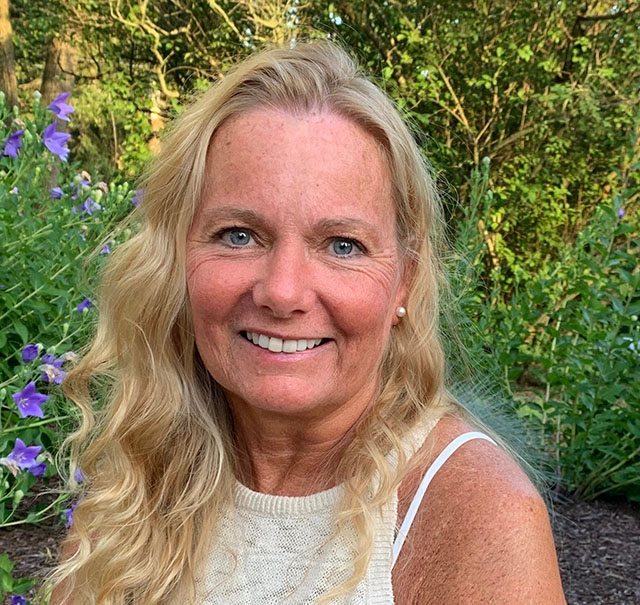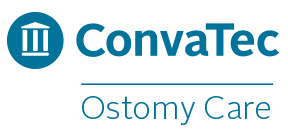By Sarah Biggart (Convatec me+™)
Frequently I speak to callers about the challenges of caring for an ostomate with memory loss. Often time, people who were previously self-sufficient, independent ostomates become pre-occupied with their pouch; sometimes even pulling on it, which could cause numerous issues1,2.
This could be in the future for some of us, and a reality some caregivers are facing now as they care for and support loved ones.
If you are assisting a loved one, and you see them tugging, pulling, scratching or playing with their appliance, the first thing you should consider is that there may be a reason for this behavior. Their peristomal skin may be itching or burning, or they might be experiencing pain or discomfort around the stoma3. For someone who may have trouble communicating, this could be their way of letting you know something is wrong.
If this is a new behavior, contact your local ostomy nurse or healthcare provider. It’s important to rule out any medical issues they may be experiencing.
If the issue is determined to be purely behavioral, we have some suggested tips and tricks that may help as you care for and support your loved one.
Pouch Change Tips1,2,3:
- Create a safe, relaxed environment. Take your cues from your loved one considering where they are the most comfortable. Maybe instead of standing in the bathroom, try laying down on the bed with soothing music or a favorite show playing in the background.
- If evenings can be tough, a morning pouch change before eating breakfast may make more sense for you.
- Keep ostomy supplies organized and clearly labeled for people who may be able to handle pouch changes independently or for rotating caregivers.
- Use a calendar or the My Ostomy Journey App to track pouch changes. Do not wait until there is a leak to change the pouch. A leaking pouch may contribute to skin breakdown issues.
- It may be necessary to store pastes, powders and sprays securely, as patients may attempt to tamper with or ingest these items.
- Try ostomy accessories designed to simplify pouch changes.
Daily Living Tips1,2,3:
- Many people with memory loss find comfort in routine. Find a rhythm to ostomy related tasks, such as emptying the pouch, and use the same verbiage each time to bring familiarity. Coordinate with the entire care team to ensure everyone is aligned with using similar language and prompts.
- Staying occupied may help with keeping hands away from the pouching system. Things like puzzles, sorting items and folding something, may be just the thing to help.
- Try an Ostomy wrap. Employing the “Out of Sight, Out of Mind” principal, a wrap helps to keep the pouch concealed and supported. A good ostomy wrap is made from a soft and stretchy wicking fabric and helps to keep sweat and moisture away from the skin and the wearer cool and comfortable.
Feeling isolated while providing care for loved ones is a common challenge, we encourage utilizing groups for ostomy support.
And remember that caregivers need care too. You may find comfort in your local Ostomy Support group Find one near you on the UOAA support group finder: https://www.ostomy.org/support-group-finder/.
Ruth and her family were confused and stressed when they had to take on the care of their 99-year- old mother’s ostomy.
“My mother has had a colostomy for nearly 60 years. She is now 99 years old with dementia, but had been independently keeping up with her stoma and pouch until just a few years ago. When family members started taking on the task of assisting her, we had to scramble to get up-to-speed since we never paid attention to the details of changing her “appliance” or emptying and re-closing the pouch.”
Ruth connected with me+™ to learn more about how to use ostomy products and accessories, and received follow up product samples and ongoing support.
“Erica was compassionate, truly listened to the problems we were encountering with my mother’s situation, and suggested products that addressed each of those challenges. The bottom line is Erica made me feel supported in my mother’s care, and that she cared that our family wanted my mother’s quality of life upheld when other healthcare providers wrote her off due to her age and mental condition. Erica contributed to us honoring my mother’s wonderfully rich and productive life at a time when that’s not evident to a stranger’s eye. We are so grateful for the support we’ve received through Convatec’s me+ Clinical Support Nurse Team.”
If you have questions about product sampling or nurse support available through the me+™ program, please contact us at 1-800-422-2211 or cic@convatec.com. We look forward to helping you soon.
Editor’s note: This blog is from one of our digital sponsors, Convatec. Sponsor support along with donations from readers like you help to maintain our website and the free trusted resources of UOAA, a 501(c)(3) nonprofit organization.
References:
- DementiaUK, Caring for a person with a Stoma and Dementia. https://www.dementiauk.org/information-and-support/health-advice/caring-for-a-person-with-a-stoma-and-dementia/. Accessed November 13th, 2023.
- United Ostomy Associations of America, Inc, Dementia Stoma Care. https://www.ostomy.org/dementia-stoma-care/. Accessed November 13th, 2023.
- McGrogan M. How holistic assessment and appropriate product selection will enhance quality of life for ostomates with cognitive impairment. WCET® Journal 2021;41(1):33-35







